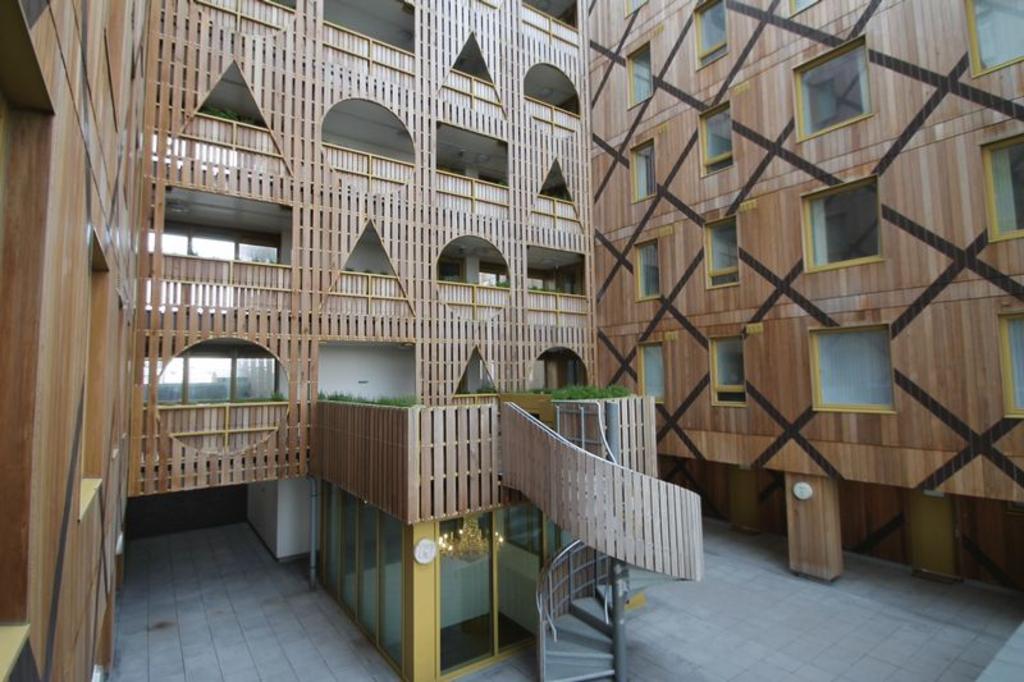#13386. Modern wooden facade with geometric cutouts: fusion of tradition and innovation

This is a remarkable example of contemporary wooden architecture where the facade becomes the main expressive element of the entire complex. The architect masterfully used wood as the primary material, creating a multi-layered composition with a rhythmic alternation of geometric shapes. Particularly notable are the triangular and semi-circular openings that break up the monotony of vertical wooden slats and give the facade a dynamic, playful character.
Two different approaches to facade design coexist in one space: on the left – an openwork wooden lattice with geometric cutouts, on the right – a denser finish with a diagonal pattern reminiscent of traditional woven designs. This contrasting combination creates visual tension and emphasizes the architectural expressiveness of the building. Facade design of this type requires a deep understanding of material properties and the ability to combine functionality with aesthetics.
The inner courtyard-atrium opens up space for air and light, while the system of bridges and passages at different levels creates an interesting spatial composition. It's worth noting how the wooden framing softens the strictness of concrete surfaces and glass elements, bringing warmth and eco-friendliness to the urban context.
The techniques used here – perforated wooden panels, geometric cutouts, contrasting textures – can be adapted for private housing as well, giving individuality and contemporary expression even to small structures. This project demonstrates how a traditional material can sound completely new in the context of modern architecture.